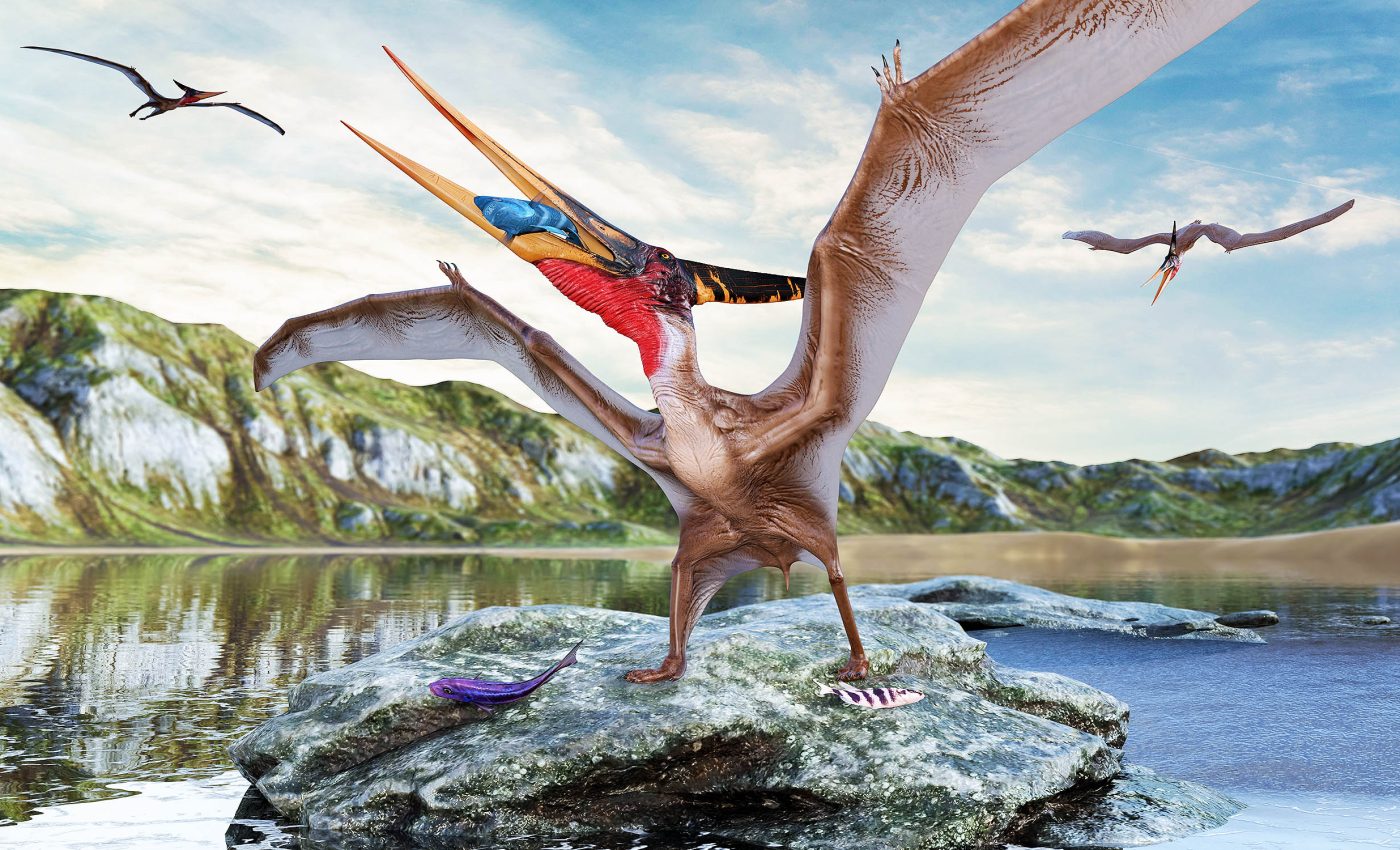
New Pterosaur species named 'Abfab' had wings as wide as a car
Dinosaurs might get all the press, but let’s not forget their high-flying cousins, the pterosaurs. These weren’t birds, but rather reptiles that ruled the skies long before feathered friends took flight. Now, the discovery of a new pterosaur species, named Abfab, is rewriting what we thought we knew about these ancient aviators.
Digging up Abfab the pterosaur
In an unassuming gravel pit near Abingdon-on-Thames, an unexpected discovery unfolded. Geologist Dr. James Etienne, initially searching for fossilized remains of marine creatures, unearthed a remarkable specimen: a large bone fragment belonging to a pterosaur, an ancient flying reptile.
This was no ordinary pterosaur. It’s estimated wingspan exceeded three meters, a measurement equivalent to approximately ten feet.
To grasp the enormity of this creature, imagine its outstretched wings stretching as wide as a compact car, dominating the prehistoric skies.
Jurassic heavyweight champion
“When the bone was discovered, it was certainly notable for its size,” says Professor David Martill from the University of Portsmouth, one of the lead researchers on the project.
After careful analysis, they concluded that this winged wonder belonged to a group of pterosaurs called ctenochasmatoids, known for their slender wings, long jaws, and bristle-like teeth.
What makes this discovery so remarkable? Well, pterosaurs from the Jurassic Period (think 200 to 145 million years ago) were typically much smaller, with wingspans averaging between 1.5 and 2 meters.
This new specimen, nicknamed “Abfab” by the researchers, blows those figures out of the water.
Abfab: Game-changer for pterosaur evolution
Abfab’s impressive size challenges the prevailing idea that pterosaurs only reached their gargantuan proportions in the later Cretaceous Period.
“This specimen is now one of the largest known pterosaurs from the Jurassic period worldwide, surpassed only by a specimen in Switzerland with an estimated wingspan of up to five meters,” Professor Martill notes.

This discovery is a clue that the evolution of these flying reptiles might have been more complex and diverse than previously thought.
“Abfab, our nickname for the Abingdon pterosaur, shows that pterodactyloids, advanced pterosaurs that completely dominated the Cretaceous, achieved spectacularly large sizes almost immediately after they first appeared in the Middle Jurassic right about the time the dinosaurian ancestors of birds were taking to the air,” explains Dr. Dave Unwin from the University of Leicester.
What did Abfab eat with those wings?
Although a complete skeletal reconstruction of the pterosaur is not available, scientists can infer certain aspects of its behavior and diet based on its close relatives.
Ctenochasmatoids, the group to which Abfab belongs, are thought to have employed their elongated jaws and bristle-like teeth to filter food from the water, much like modern-day flamingos.
This suggests that Abfab likely soared above ancient Jurassic lagoons, skillfully skimming the water’s surface to capture small aquatic organisms for sustenance.
Fossil treasure trove
The Oxfordshire gravel pit where Abfab was discovered proved to be a rich source of paleontological finds.
In addition to the pterosaur, the site yielded a diverse array of Jurassic marine fossils, showcasing the abundance of prehistoric life that once thrived in the region.
Among the notable discoveries were the remains of ichthyosaurs, dolphin-like marine reptiles, and plesiosaurs, large marine reptiles with long necks.
The site also yielded numerous ammonites, extinct cephalopods with coiled shells, as well as fossils of ancient sharks.
Still much to learn about prehistoric creatures
This remarkable collection of fossils indicates that the area served as a thriving ecosystem for a wide variety of prehistoric creatures, inhabiting both the skies and the waters.
This unexpected discovery of a giant pterosaur reminds us that the fossil record still holds many secrets. What other surprises are waiting to be unearthed?
One thing’s for sure: Abfab has earned its place in the pterosaur hall of fame, and it’s given scientists a whole new perspective on the evolution of these magnificent creatures.
So, the next time you think of dinosaurs, spare a thought for the pterosaurs. They were the aerial aces of their time, and Abfab proves they were capable of reaching truly impressive sizes much earlier than we thought.
The study is published in the journal Proceedings of the Geologists Association.
—–
Like what you read? Subscribe to our newsletter for engaging articles, exclusive content, and the latest updates.
Check us out on EarthSnap, a free app brought to you by Eric Ralls and Earth.com.
—–














